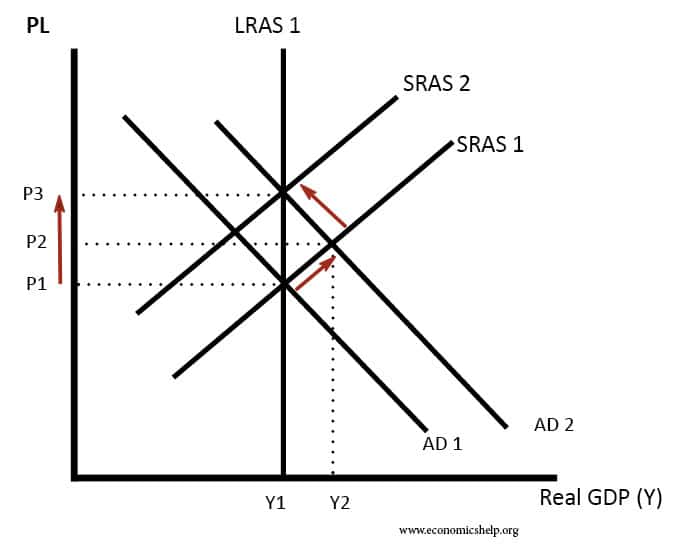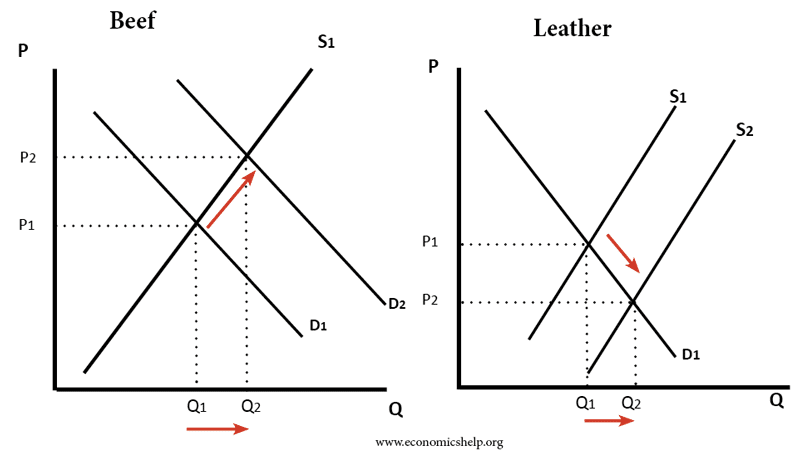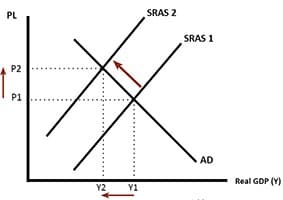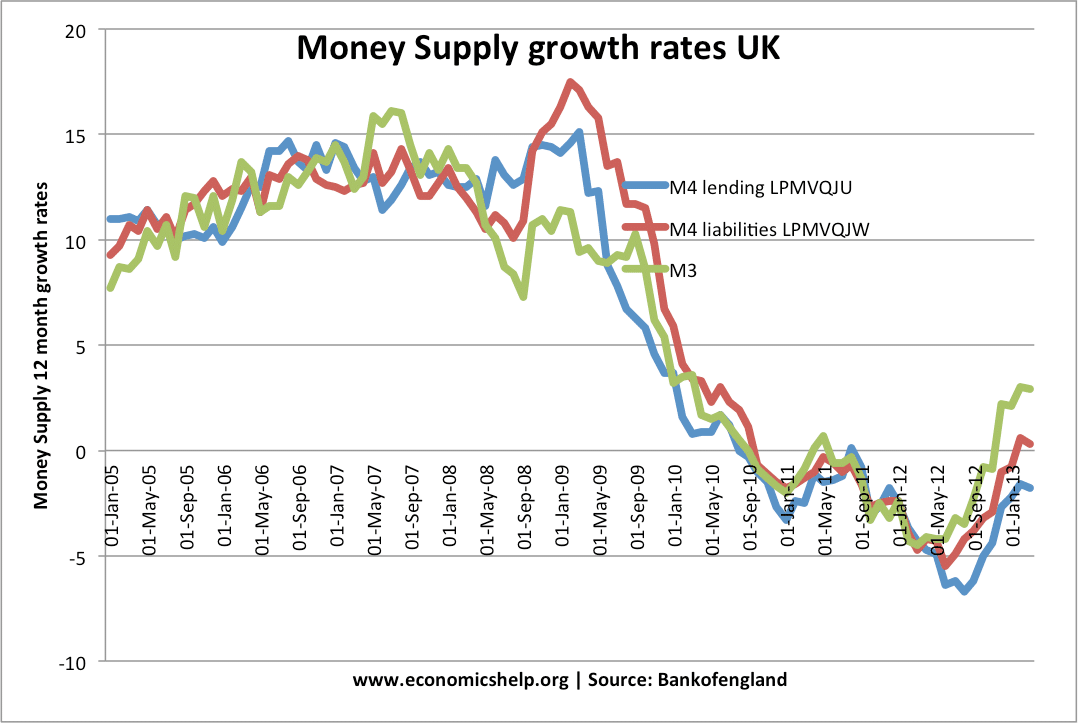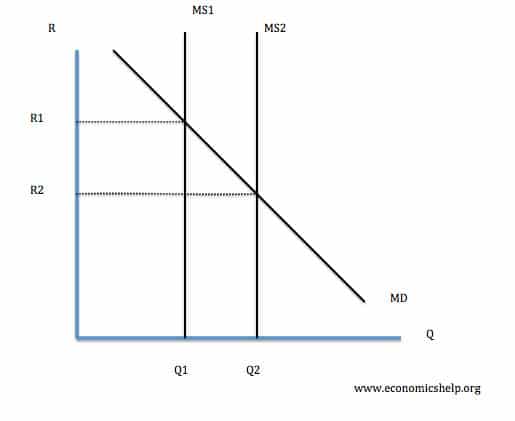Shape of aggregate supply curves (AS)
The aggregate supply curve shows the total supply in an economy at different price levels. Generally, the aggregate supply curve slopes upwards – a higher price level encourages firms to supply more. However, there are different possible slopes for the aggregate supply curve. It could be highly inelastic (vertical) to very elastic. It is important …

